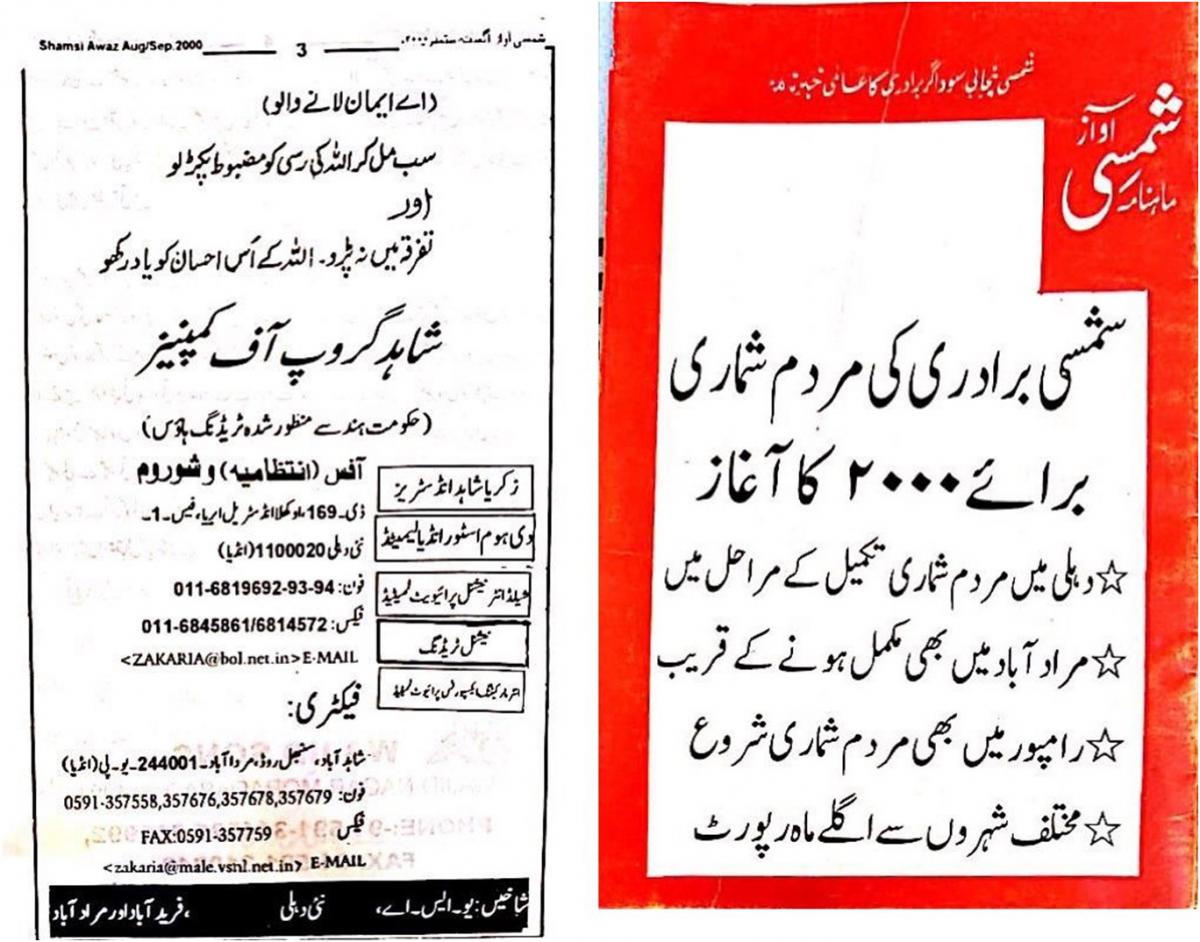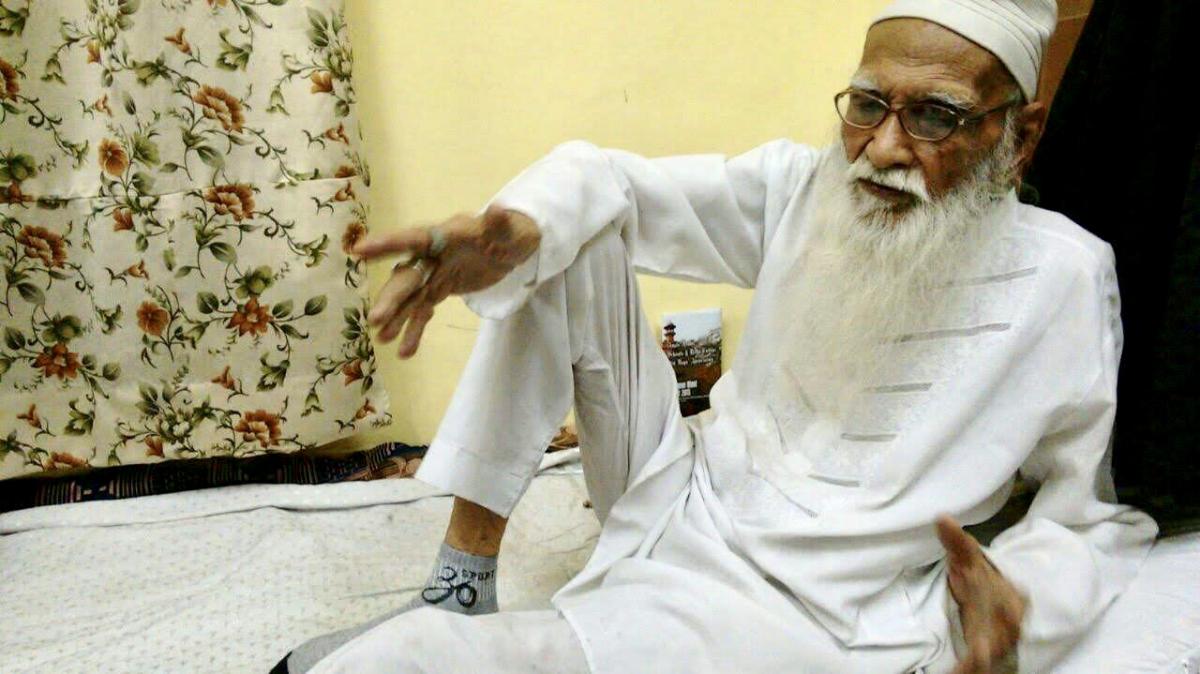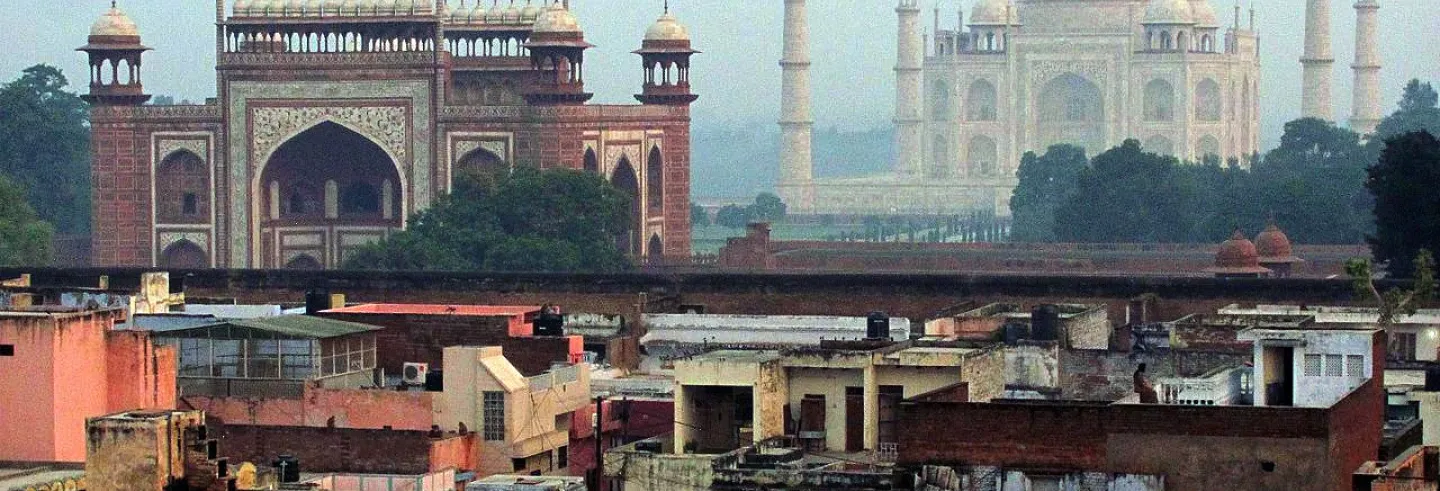“What’s in a name?” Everything. I have always had a thing for names. I believe how people turn out has a lot to do with what they were named. But that apart, with cities in Uttar Pradesh renamed — from Allahabad to Prayagraj, Mughalsarai to Deen Dayal Upadhyaya Nagar — or proposed to be renamed — Meerut to Pandit Nathuram Godse Nagar, and my hometown Agra to Agravan — my answer to the timeless Bardic question is: Everything.
My first name is a fairly global Arabic variant of Christ’s sainted Mother. Although I grew used to responding to the Old Testament version of my name — Miriam — in my convent school, it was my surname “Sikander” that had been the butt of many honest inquiries. My friends in school were convinced that I was a Mughal descendent because emperor Akbar’s splendid mausoleum in Agra is in the grounds of a place called Sikandra. To make matters worse, there is also in Sikandra, the tomb of Mariam-uz-Zamani, the wife of Akbar popularly identified as Jodha Bai. Some have claimed Jodha’s marriage to Akbar as love-jihad. Regardless of whether it was or not, my personal grouse is that in primary school, I had to go on traumatic school picnics to Mariam’s Tomb in Sikandra with my name “Maryam Sikander” hanging around my neck more like an albatross than an ID card.
So, the thorny question is, do I or do I not have Mughal roots? What were my progenitors doing in an erstwhile Mughal capital?
I don’t think we sprang from the barbaric loins of Central Asia quite so directly.
My surname is a patronym. My grandfather loved regal names, so he named my father Sikander-e-Azam, literally Alexander-the-Great and my uncle Babar-e-Azam, making my cousins, in all earnestness, “Babar ki aulaad”, the juicy pejorative used for Indian Muslims. I am only glad we don’t have an Aurangzeb or Taimur in our family. The former would have been renamed APJ Abdul Kalam by the New Delhi Municipal Corporation and the latter would have got bad press without any of the celebrity enjoyed by the infant scion of the Pataudi clan.
My father’s royal moniker left little space for our clan name, Shamsi, which he conveniently dropped. As for the Mughal connection, to my great dismay, I don’t think we sprang from the barbaric loins of Central Asia quite so directly. As far back as I could trace, all my forebears were traders of some or the other kind from Delhi or from what is today Uttar Pradesh. One exception was my maternal grandfather, a government servant who was Syed and traced his lineage back to the Prophet. I could instinctively tell that he was a different biradari from the Shamsi biradari of my other three grandparents. He was quieter, liked poetry, and preferred his saalan mild.
A biradari is an endogamous fraternity where everyone knows everyone, honour and shame are collective, and gossip is floated around and guarded with the secrecy befitting a crime-syndicate. Besides, you can tell by the quaintness of their saalans that they are a brotherhood.
The Shamsis were originally Hindu Khatris, converted to Islam by Hazrat Shamsuddin Sabzwari, a Sufi missionary...
The Shamsis are a community of Muslim merchants, historically called the Jamiat-e-Punjabi-Saudagaran-e-Dilli (Society of the Punjabi Merchants of Delhi) or Qaum-e-Panjabiyan (the Community of Punjabis), also known as the Saudagaran-e-Dilli or simply Dilli walay. If we were Qaum-e-Punjabiyan, why were we also Saudagaran-e-Dilli? If we were Saudagaran-e-Dilli, what were we doing in Uttar Pradesh? Did my dropped surname have anything to do with Shams of Tabriz — the Persian mystic who was the spiritual instructor of Rumi and to whom Mevlana Rumi dedicated 50,000 verses of his poetry, lovingly titled Diwan e Shams Tabriz?
The Shamsis were originally Hindu Khatris, converted to Islam by Hazrat Shamsuddin Sabzwari, a Sufi missionary often confused with his glamourous namesake. According to one legend, they were one of the 64 families of various Punjabi Muslim trader castes who migrated from Sargodha in Punjab to Delhi in the 17th century, during the time of Shah Jahan. Other scholars maintain that they migrated in the 18th century, during the reign of Shah Alam II, when the Mughal empire was tottering. 1 Abdul Haqq Arshi, “Kya hum Punjabi Saudagaran Shamsi hain?” in Nasir Ahmad Baghpati, ed. Tarikh e Qaum e Punjabi Saudagaran, Karachi: Punjabi Saudagaran Youth League, pp.39-76, quoted in Margrit Pernau, Ashraf into Middle Classes, New Delhi: Oxford University Press, 2013, p249. Delhi was seeing the waning fortunes of aristocrats. The poet Ghalib would quip about elegance coexisting with genteel poverty: “There are two Ghalibs, the Seljuk Turk who mixes with badshahs and the poor one, in debt and insulted”. The expedient Qaum-e-Punjabian, truly ibn-ul-waqt, sons of the moment, presumably became Saudagaran-e-Dilli on the declining fortunes of the ur-Dilliwalas like Ghalib.
By the 19th century, Delhi’s Punjabi Muslims were some 20,000 in number and had built up an extensive trade in shoes — a commodity Hindu merchants may have avoided. A later group came to dominate Delhi’s Sadar Bazar. Some families owned printing presses, with their sons becoming doctors, lawyers, or administrators, but wealth remained invested in the shoe trade. Before 1857, the community had lived near the Kabul Gate and in the Punjabi Katra. After the Revolt of 1857, some families moved to the neighbourhoods of Baradari Nawab Wazir, Katra Ghee, and Kishanganj. Others moved out from Delhi. My paternal great-grandmother was born in Kishanganj. My paternal grandfather was born in Hapur and maternal grandmother in Bareilly, both now in Uttar Pradesh.
Becoming Ashraaf
The broad and somewhat bowdlerised discourse is that Indian Muslims belong to two strata: the ashraaf and ajlaaf. The ashraaf (plural of shareef, literally “noble” or “highborn”) comprising Syeds, Mughals, Pathans, and Sheikhs, came. The ajlaaf converted. Not true. At least not entirely true. Since Punjabi Muslims were Sheikhs, and Sheikhs are patently ashraaf, and since everyone around me has always indulged in some unspoken descent-based superiority that they inherited, we must have ‘come’. But while the word Sheikh meant “learned” and referred to holy immigrants from Arabia, it was also used for local converts: “A man may be Sheikh by birth or become one if he is not a Muslim”. Curiouser and curiouser.
Money could buy you anything, even ashraafness.
Max Weber pointed out that communities are social bonds premised on a subjective feeling of belonging and that all communities are felt communities. To be ashraaf, you had to feel ashraaf enough. With criss-crossing economic and social factors, sharaafat was a habitus, a matter of rehan sehan or comportment. Wealth translated into social standing. Money could buy you anything, even ashraafness. Now, it was only a matter of sending your brides to their marital homes, with a copy of Ashraf Ali Thanvi’s Bahishti Zever (Jewels of Paradise) a manual on how to be perfect ashraaf wives that taught women khaanadaari (housekeeping) and Victorian middle-class virtues of modesty, piety and thrift. My mother had been given a Bahishti Zever too. It was placed reverently in a juzdaan like the Quran.
Newspapers and magazines spearheaded by the new elites conveyed codes of shareef conduct, while also constituting the ashraaf themselves. The Shamsi biradari had its own magazines, the Shamsi Aawaaz and the Tohfa-e-Khawateen, a ladies’ journal, both published from Moradabad. Shamsi Aawaz carried the official gossip of the biradari, matrimonials, and matters like who had left for America, who had become the principal of a school, who cleared the matriculation exam, some absurd poetry, matters of piety, and lots of shoe-firm advertising.

The other way to ennoble yourself despite your missing or doubtful central Asia connection was to patronise mosques and madrasahs. 2 Narayani Gupta, Delhi Between Two Empires 1803-1931: Society, Government and Urban Growth, Delhi: Oxford University Press, 1981, 54. In the first half of the 19th century, Punjabi traders funded activities of Islamic seminaries like Madrasah-i-Rahimiyah of Delhi. Some of them threw in their lot with those for whom the Rebellion of 1857 had religious motives. They patronised the Fatehpuri Masjid, which had been returned to the Muslims in 1877. The mosque had been seized and sold off by the British when they took back Delhi from the rebels. Fatehpuri Masjid became a centre of religious debates in a way the larger Jama Masjid, controlled by officialdom, could not become. This could explain why despite the Shamsis being converted by Hazrat Shamsuddin Subzwari, a Sufi of the Shi’ah Nizari sect, my parents were Sunni to the hilt, with the word Deobandi bouncing around in my house in many a thoughtless cavil. Darul Uloom Deoband was founded in 1866, after the end of Muslim political power in India to address the community’s zawaal (decline) and zillat (humiliation). The ulema of the various schools debated about bida’a and shirk, innovations and deviations from orthodoxy. At home, this translated into my family not visiting shrines, so I had to go and see Hazrat Nizamuddin’s dargah myself when I was in college.
As I wondered whether we were holy immigrants from Arabia or local converts, my father texted a brand-new woke reason for my ancestors not having migrated to Pakistan: “Because they were secular.”
After 1947, many Shamsis migrated to Pakistan, having migrated a couple of centuries ago from what was now Pakistan. Others migrated to Mecca and Medina, taking on the surname Aldehlwi, “of Delhi”. Some, like my family, stayed. With everyone debating citizenship, burrowing out their suspect roots and documents, finding freedom-fighters in their families, I shot an urgent text message to my father: “Why didn’t your grand-parents leave for Pakistan?” to which he, having no clue himself, texted back: “Because they were lazy. They were happy with their lives here. Qana’at pasand.” To which I retorted, “You’ve got to have a better reason than laziness. My forefathers did not migrate because they were lazy?”
After prodding older members of my family, most of whom also gave me anti-climactic responses, I figured that while my paternal grandfather stayed for his ailing parents, my maternal great-grandfather stayed for his government job and didn’t feel the need to check out greener pastures in the newly minted Pakistan. Fairly pedestrian reasons for a monumental decision. So much qana’at, contentment, for a historically expedient people.
As I wondered whether we were holy immigrants from Arabia or local converts, my father texted a brand-new woke reason for my ancestors not having migrated to Pakistan: “Because they were secular.” He is trying very hard. The truth is a bit of a blur just like the matted history of the north Indian Muslim elite, with the colliding vectors of conversion, class consciousness, social stratification, economic expediency, and who knows, some laziness too.
The Names of Belonging
Partition has come to my generation largely through some good, but mostly reckless, Hindi films. The experiences of the shoe traders of Agra in the searing aftermath of 1947 were captured in MS Sathyu’s Garm Hava. The film captures the trials of the Mirza family in Agra where Salim Mirza, and his elder son Baqar Mirza, run a shoe business. Salim’s brother Halim is convinced that Muslims would be discriminated against in India and leaves for Pakistan. The Mirzas’ ancestral haveli, registered in Halim’s name, is confiscated by the Government as evacuee property. Muslims are increasingly viewed with suspicion and Salim’s younger son, played by Farooque Sheikh, faces repeated rejections at job interviews. Employers suggest that he try his luck in Pakistan instead. While most of my friends watched this New Wave film in college, I had watched it many times while growing up, I’ll tell you why.
When the film was shot in Agra, my father was eight years old. The precious anecdote is that he auditioned for the role of Baqar Mirza’s truant son, but lucked out on what would have been his two minutes of fame. The role went to the son of a man named Enam Elahi, the elder brother of Shan Elahi, who played the role of the witty tanga wala in the film. But the filmmakers liked my father’s name and chose to name Farooque Sheikh’s character “Sikandar” Mirza.
My only anecdote is my father’s name.
Shan Elahi is from our biradari, and through a trail of sundry phuppos, I traced my way to him. He does not remember any such thing but was glad to recollect bits about the film. The ancestral haveli of the film belonged to Enam Elahi’s friend, and the house the Mirzas relocate to was Enam Elahi’s own. Between now and then, our names and our namesakes, the places we inhabit and the places we are supposed to inhabit, between histories and their palimpsests, memory is the great leveller. So, the only anecdote that could have been is now reduced to a blur too.
Sikandar Mirza, the character of Garm Hava, has a real-life namesake, in Chooriwalan, Purani Dilli. While my Mughal connection is as iffy a guesstimate as anybody else’s in the subcontinent, Sikandar Mirza can roll out a gold-inked shijra of several metres that traces his roots to the emperor Shah Jahan and even further back to the mighty Genghis Khan. His father, the late Mirza Naseem Changezi, at 106 years, was the oldest living man in Delhi when I met him in 2016. Grown hard of hearing, Mirza Naseem would indulgently rabbit on about Dilli ki nahaari when asked about Dilli ki shaayari, his experience of playing hockey in Afghanistan, or how he ensured food was supplied to Bhagat Singh when the freedom-struggle hero was in hiding. Sikander Mirza supplemented these anecdotes with pictures.

My only anecdote is my father’s name. Sikander Mirza has Mughal era stoneware and china, identical to the ones in the British Museum. He has daggers sheathed in jade. None such for me, alas, only Shamsi Aawaaz.
Intimate Crossings
My Pakistani neighbour in London jokingly asked me if I can now consider migrating to Pakistan. The only two Pakistani things I have found a soul-connection with are: Fawad Khan and Shahi Deluxe. Fawad Khan is a Pakistani actor made of celestial ether and Shahi Deluxe is a mouth freshener that you can buy at Tiraaha Bairam Khan in Purani Dilli, for three rupees. You also got it in the nikaah ki pothli along with dried dates at many weddings back in Agra. Shahi Deluxe has always crossed borders, intimately finding its way to India into post-nikaah treats.
I don’t know if I was more heartbroken when Fawad Khan was hastily dispatched back to Pakistan in the wake of the Pulwama attack, or when Shahi Deluxe made a Shahi announcement that they were going to remove chhalia from Shahi Deluxe because the betel-nuts were being illegally imported into Pakistan. The company has since explained how competitors were using smuggled chhalia, damaging Pakistan’s economy. Shahi Deluxe will have nothing to do in this felony. So Shahi Deluxe is now Shahi Deluxe Lite minus the betel-nuts, with nothing shahi or deluxe or weighty about it anymore.
Speaking of “Shahi”, with the current regime out on a spree to rename cities, the historian Irfan Habib had suggested that the first name the ruling party ought to consider changing was that of its chief Amit Shah, as his surname is of Persian origin. I will leave it at that.
As for me, my name, my father’s name, his clan name, and the place of my birth are a confection of history and happenstance. I am glad my father dropped the clan name and strung his eminent name to mine, avoiding the whole Shamsi business. I am also praying that our names on our documents are consistent through the generations and nobody has been over-smart with spelling. “Such mistakes can lead to loss of citizenship”, cautions Aman Wadud, a lawyer at Assam’s foreigner’s tribunals.
There is great deal of paranoia about which documents will suffice and whether we can tender them and tender them in good time. I am thinking if we cannot muster documents, perhaps we can just submit an issue of Shamsi Aawaaz.









